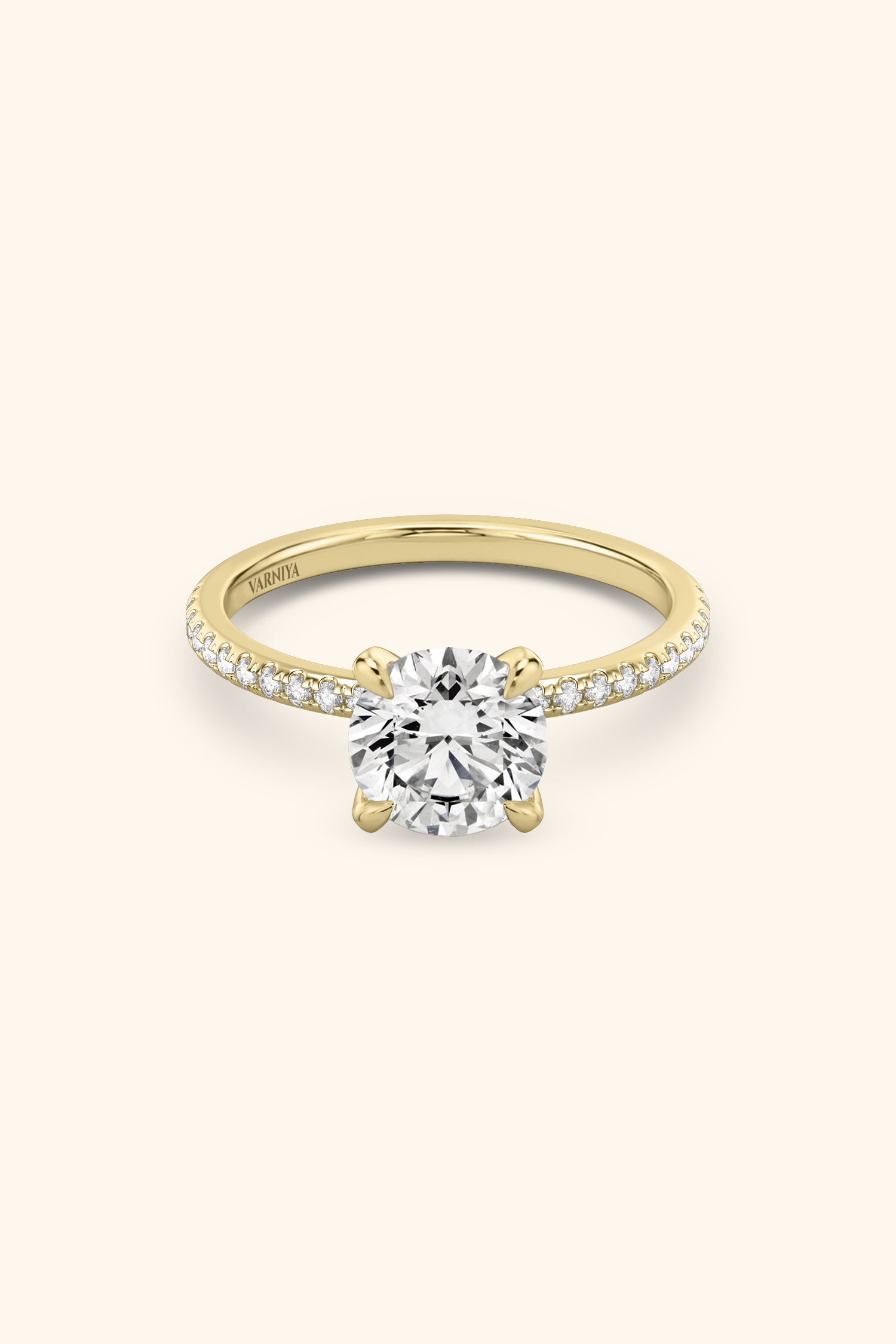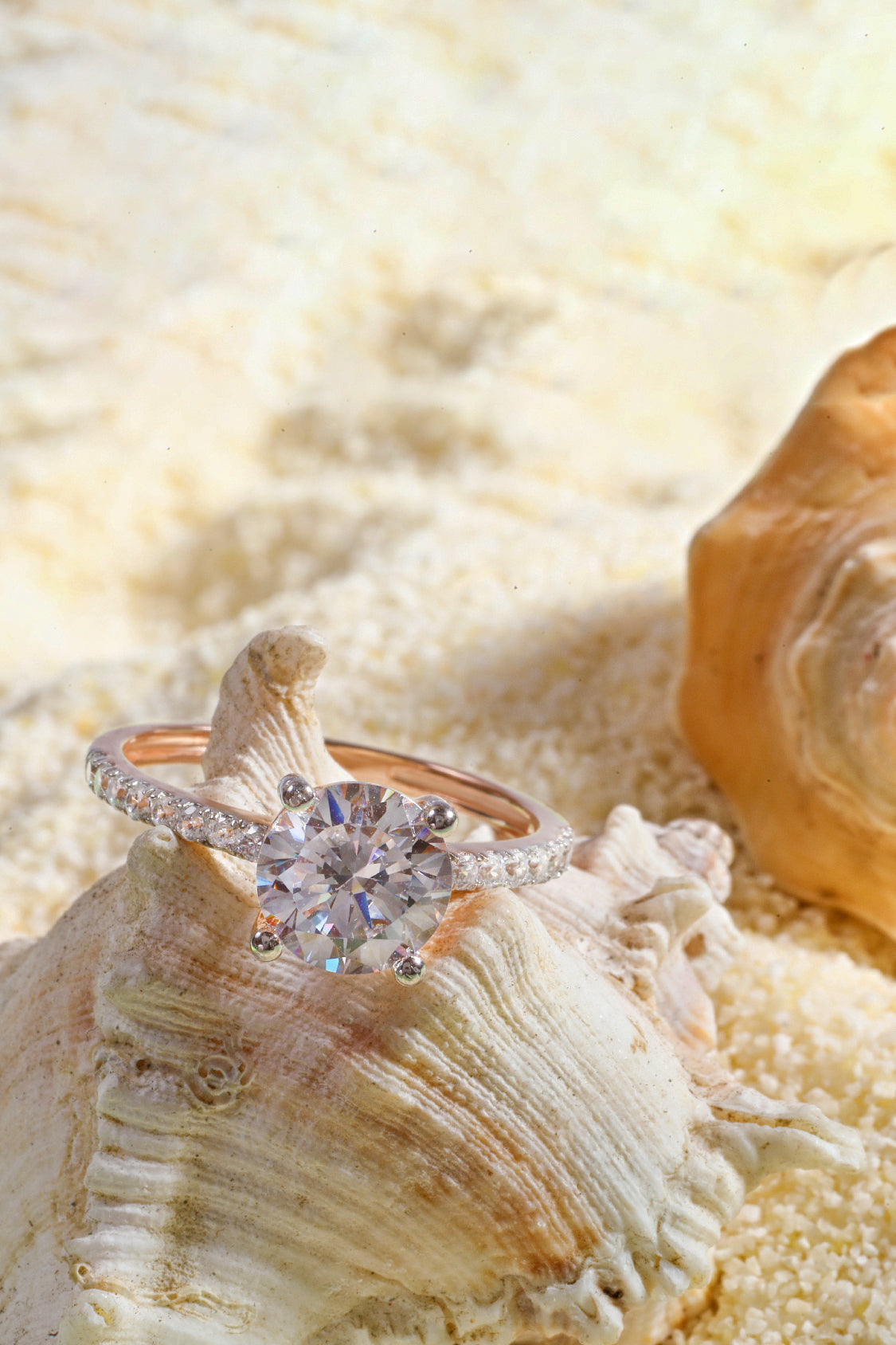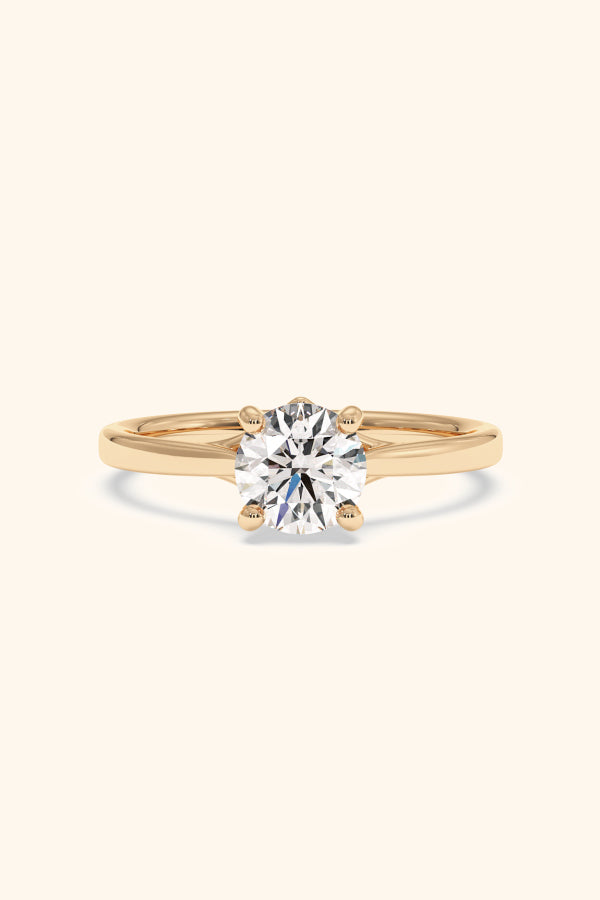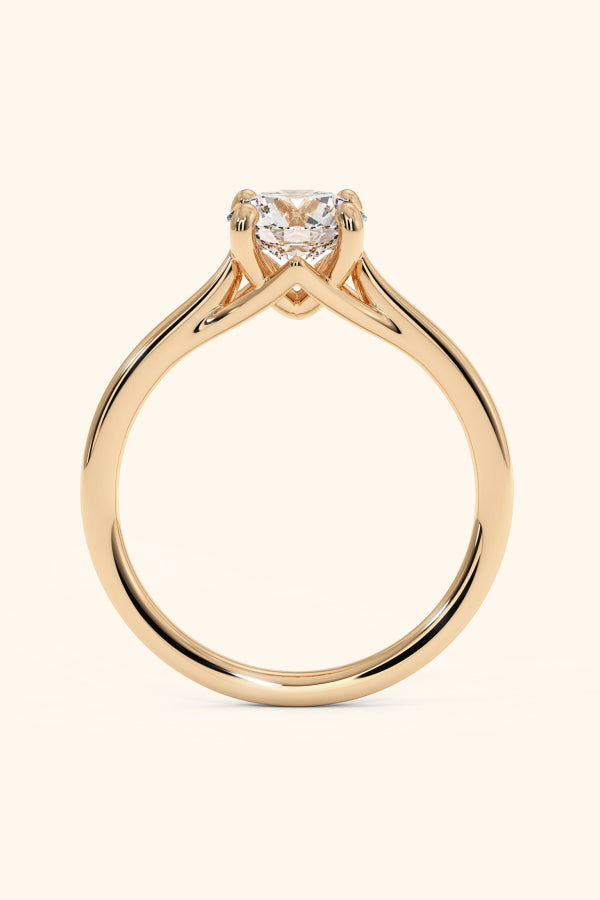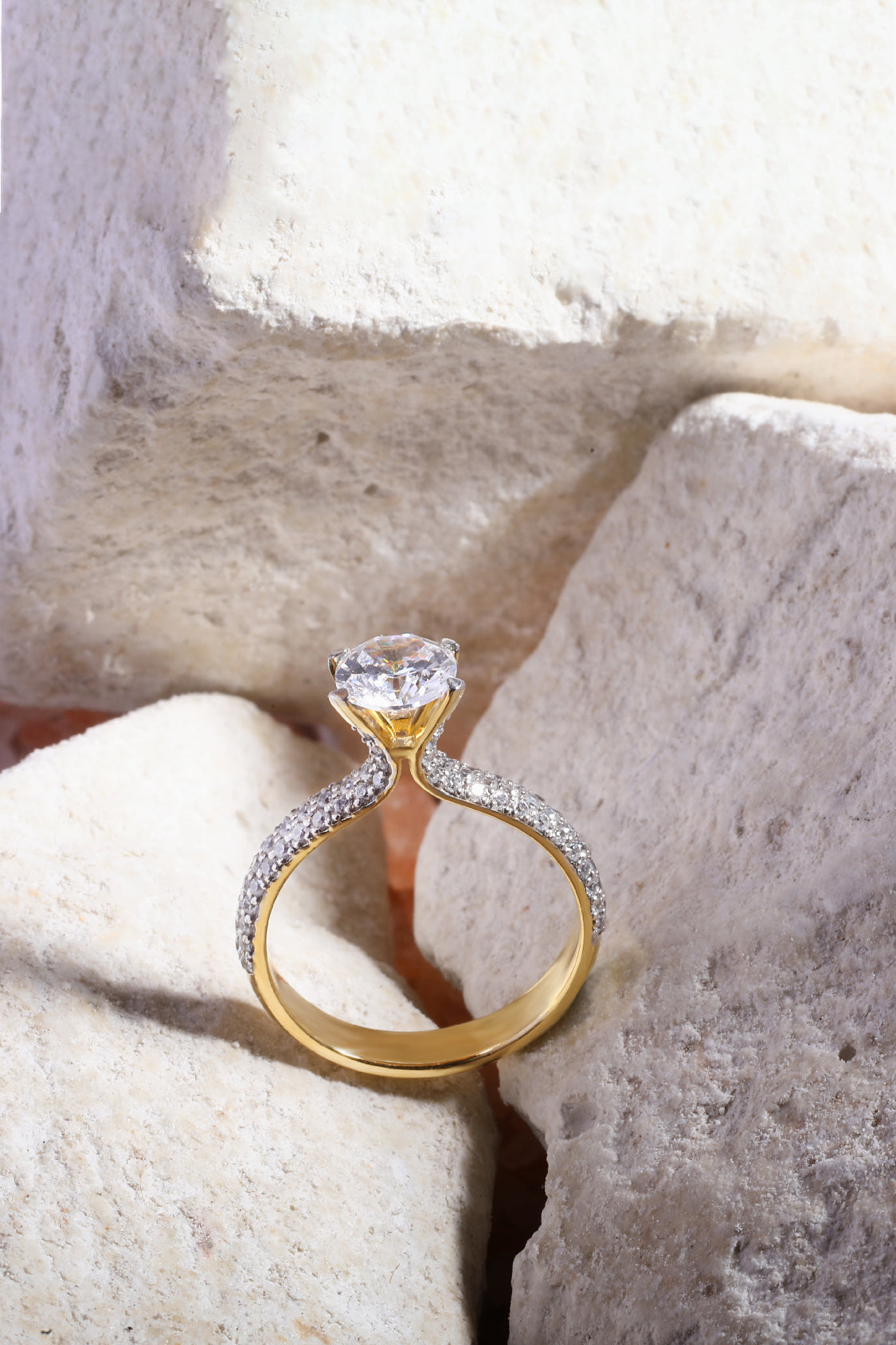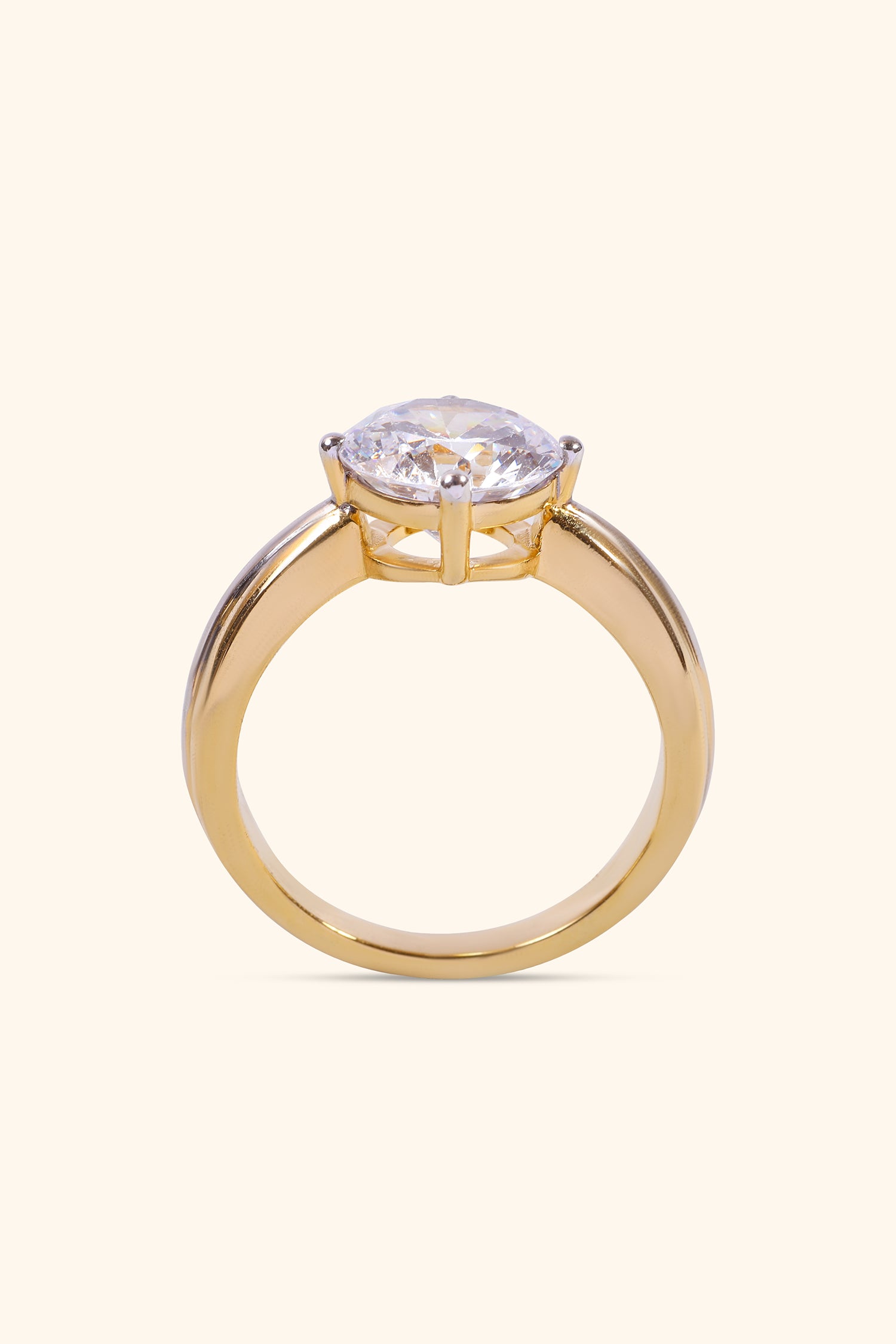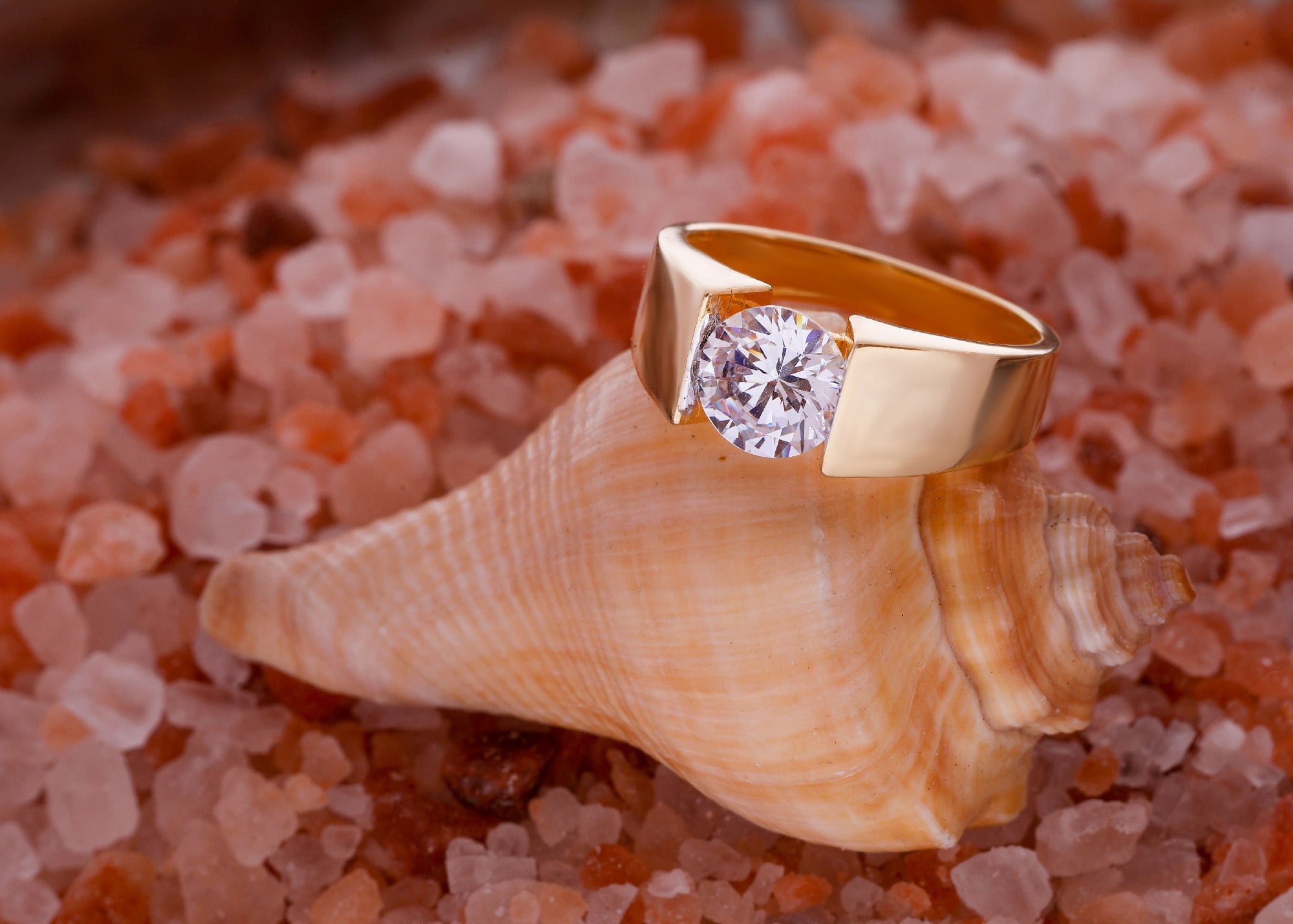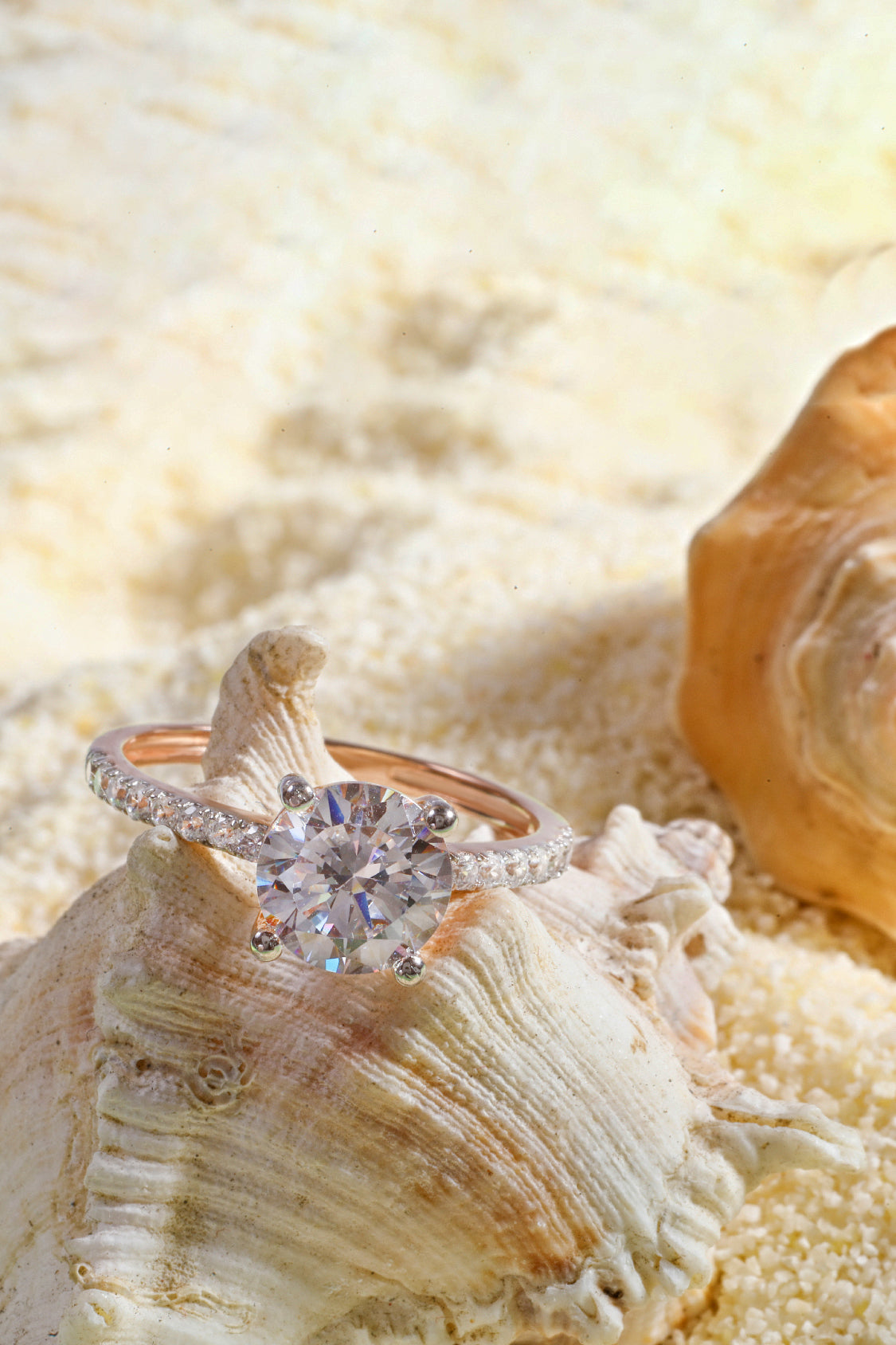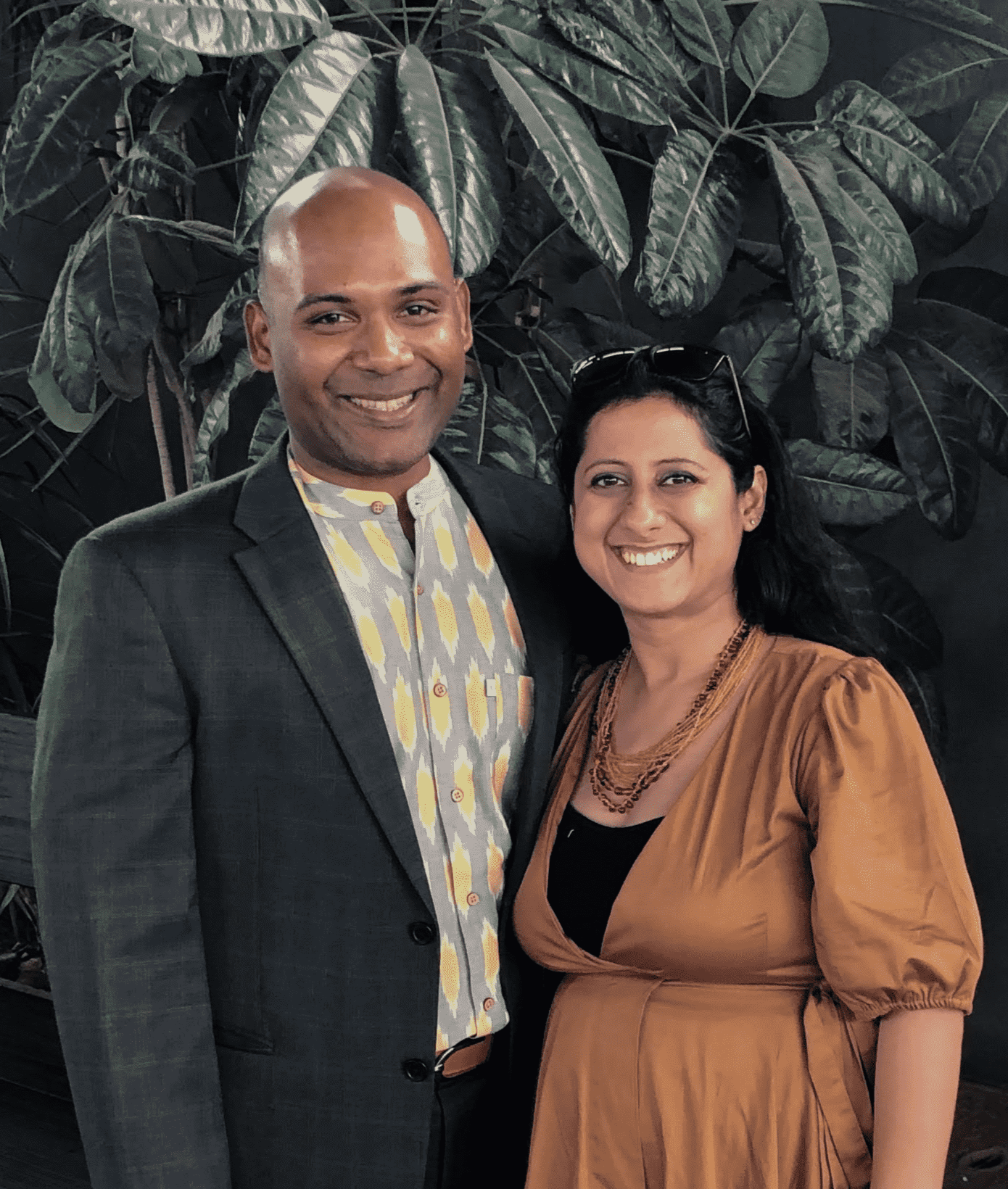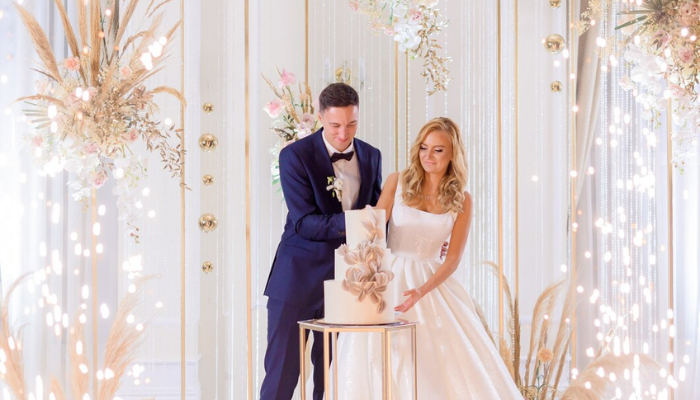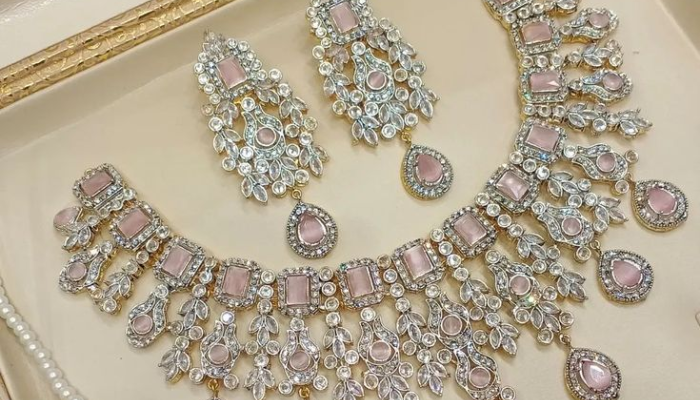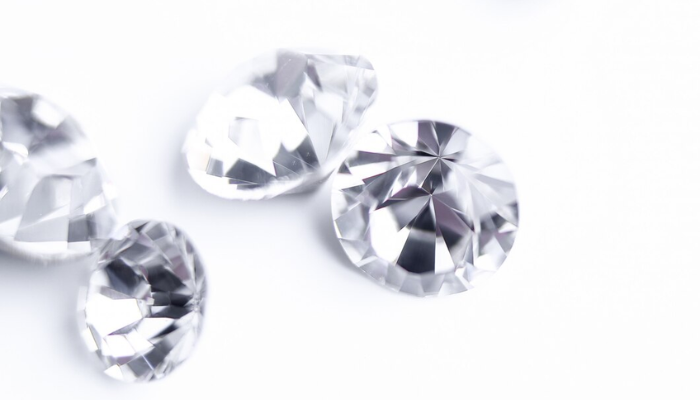
Understanding Diamond Cut - A Simple Guide to Shapes and Types
When shopping for a diamond, one of the most important factors to consider is the diamond cut. It plays a key role in determining how the diamond interacts with light, affecting its brilliance, sparkle, and overall visual appeal.
Let's dive deeper into understanding diamond cut and why it’s such an important element when choosing the perfect stone.
The cut is one of the four key qualities, or 4Cs, that determine a diamond’s value and beauty, alongside carat, clarity, and color. It is essentially the way a diamond is shaped and polished from its original rough form. Unlike the shape, which refers to the outline of the diamond (like round or square), the cut focuses on how the facets are arranged and how well the diamond reflects light. A well-cut diamond will have maximum sparkle, while a poorly cut diamond may look dull despite its size or clarity.
Diamond Cut Guide: Understanding the Components
To truly appreciate the impact of a diamond’s cut, it's important to understand the key components that influence its overall appearance and brilliance. The quality of the cut can significantly affect how well the diamond interacts with light and, ultimately, its sparkle. Here’s a breakdown of the main components involved in a diamond’s cut:
-
Cut Quality: Cut quality refers to how well the diamond has been crafted, considering its proportions, symmetry, and finish.
-
Cut Type: Cut type, on the other hand, includes categories like excellent, very good, good, and so on, indicating the overall craftsmanship.
-
Symmetry and Dimensions: Symmetry refers to the evenness of the diamond’s facets and how perfectly they are aligned. Proper symmetry ensures that light is reflected evenly, enhancing the diamond’s brilliance. Dimensions, such as depth and width, also play a crucial role in how light enters and exits the diamond, influencing its overall sparkle.
These components come together to define the overall beauty and brilliance of a diamond. Let’s understand about the different types of diamond cuts through our guide.
Looking for the perfect engagement ring? Explore our stunning collection here and find the one that speaks to you!
Exploring Different Types of Diamond Cuts
When it comes to choosing a diamond, the cut type plays a crucial role in determining its beauty and brilliance. Each diamond cut is designed to maximize light reflection and showcase the stone’s unique qualities. Let’s take a closer look at the main types of diamond cuts!
Brilliant Cut
This cut features triangular and kite-shaped facets that are strategically arranged to maximize sparkle. Its multiple facets allow light to reflect and refract, creating a dazzling display of brilliance from every angle.
Step Cut
Characterized by long, rectangular facets, the step cut creates a "hall of mirrors" effect. This cut is often found in emerald and baguette diamonds and is known for its elegance and clarity rather than its sparkle, making it ideal for showcasing the diamond’s internal qualities.
Mixed Cut
As the name suggests, the mixed cut combines both brilliant and step-cut facets. This cut brings together the brilliance of the brilliant cut and the clarity-enhancing properties of the step cut, providing a balanced combination of sparkle and elegance.
These various cuts offer different aesthetics, allowing you to choose a diamond that best suits your preferences and style.
Understanding the Difference: Diamond Cut vs. Diamond Shape
When shopping for diamonds, it’s essential to understand the difference between cut and shape. While both terms are often used interchangeably, they refer to distinct aspects of the diamond. The shape determines the overall outline, while the cut refers to the quality of the facets and how the stone interacts with light.
Let’s break down the key differences between diamond cut and diamond shape in a clear comparison:
|
Aspect |
Diamond Shape |
Diamond Cut |
|
Definition |
Refers to the overall geometric silhouette of the diamond (e.g., round, square, oval). |
Refers to how the diamond is cut and shaped, focusing on the facets, angles, and symmetry. |
|
Focus |
Focuses on the diamond's outline or form. |
Focuses on how well the diamond’s facets are cut to maximize light reflection. |
|
Appearance |
Determines the diamond’s external look and style. |
Affects how the diamond sparkles and reflects light. |
|
Examples |
Round, Princess, Oval, Emerald, Radiant. |
Brilliant, Step, Mixed. |
|
Diamond Quality |
Primarily influences aesthetics and style. |
Directly influences brilliance, fire, and scintillation. |
In essence, while the shape gives a diamond its distinct visual appearance, the cut ensures that the stone shines with brilliance and sparkle. Understanding both helps in choosing a diamond that matches your preferences in both style and sparkle.
Must read: Differences Between Lab Grown & Natural Diamond Prices - VARNIYA
Diamond Cut Quality Grades: The Sparkle Spectrum
The quality of a diamond’s cut is graded based on how well it has been crafted to reflect light. This directly influences the diamond's brilliance and overall appearance. The cut grades range from Excellent to Poor, and each grade reflects a different level of light reflection and sparkle.
Here’s a breakdown of the different cut grades:
|
Grade |
Description |
Impact on Appearance |
Price Range |
|
Excellent Cut |
Reflects the most light, delivering maximum brilliance. |
The diamond sparkles intensely, showing off its best qualities. |
Highest price range due to premium quality. |
|
Very Good Cut |
Reflects high light with excellent brilliance. |
Almost as sparkly as an Excellent Cut, with only minor differences. |
Slightly more affordable than Excellent. |
|
Good Cut |
Reflects substantial light, though not as much as higher grades. |
A noticeable sparkle, but slightly less brilliance compared to the top grades. |
More budget-friendly, a great option for value. |
|
Fair and Poor Cut |
Reflects less light, resulting in reduced sparkle. |
Limited brilliance and sparkle, less visually appealing. |
More affordable but lacks shine. |
Understanding these cut grades helps you balance the sparkle and cost, ensuring you choose the right diamond based on both quality and budget.
You might also like: Differences b/w Lab Grown & Natural Diamonds
Key Factors That Influence Diamond Cut Value
The cut of a diamond is a major factor in its overall value. Several key elements impact how much a diamond will cost and how well it will hold its value:
-
Cut Grade and Value: Higher cut grades like Excellent or Very Good lead to greater brilliance and increased value. A better cut maximizes light reflection, making the diamond more desirable.
-
Round Brilliant's Value Retention: The Round Brilliant cut holds its value the best, thanks to its unmatched sparkle and timeless appeal. It's in high demand and tends to appreciate or retain its worth over time.
-
Economic Aspects of High-Quality Cuts: High-quality cuts, like those with precise proportions and symmetry, are a long-term investment. While they cost more upfront, they typically have a better resale value and market demand.
-
Impact of Size and Proportions: Larger diamonds with better proportions often fetch higher prices due to their visual impact. The better the cut, the more spectacular the diamond appears, boosting its market value.
-
The rarity of Perfect Cuts: Diamonds that are perfectly cut are rarer and more valuable, making them prized in the market. Exceptional craftsmanship results in a more costly diamond.
Now that you've grasped the basics, let's guide you in selecting the perfect diamond cut based on your personal preferences.
How to Choose the Best Diamond Cut: A Step-by-Step Guide
Choosing the best diamond cut is a big decision, but with a little guidance, it can be a smooth task. After all, the cut plays a huge role in the diamond's sparkle and overall appearance. Here’s a simple, step-by-step process to help you pick the perfect diamond cut that fits your needs, preferences, and budget.
1. Start with the Shape: Before you think about the cut, decide on the shape of the diamond. Do you want something classic like a round shape or something a bit more unique like an emerald or oval shape? The shape is all about personal preference, so take your time and choose the one that feels right for you.
2. Understand the Cut Grade: The cut grade tells you how well the diamond has been shaped to reflect light. The higher the grade, the more sparkle you’ll get. Opt for an Excellent or Very Good cut if you want the diamond to shine bright. If you're on a budget, a Good cut still offers great brilliance without breaking the bank.
3. Consider Your Budget: Be realistic about what you can afford. Higher cut grades like Excellent come at a premium price. If you're aiming for more sparkle but want to stay within a specific price range, a Very Good or Good cut may be the way to go, offering excellent value for your money.
4. Look at Light Performance: The cut directly impacts how the diamond handles light. A well-cut diamond reflects light beautifully, creating that iconic sparkle. Ask to see how the diamond performs under various lighting conditions. This will give you an idea of how much brilliance it will have when worn.
5. Check for Symmetry and Proportions: Don’t overlook the importance of symmetry and proportions in the cut. A diamond with well-aligned facets and proper proportions will reflect light better and appear more vibrant. Be sure to inspect these features or ask your jeweler for details.
Take your time, and remember, the right diamond cut is all about finding that perfect balance between beauty and budget!
Choose Lab-Grown Diamonds from Varniya
Now you’ve understood the different types of shapes of Diamond cut and how they differ. So, are you all set to make the next big move and surprise someone? Uh-oh! You might be searching for a reputable jeweler with the perfect gem, right?
When it comes to purchasing lab-grown diamonds, Varniya stands out as the best solution. With a commitment to quality and authenticity, Varniya offers certified lab-grown diamonds that meet the highest standards.
Lab-grown diamonds undergo rigorous certification processes, just like natural diamonds. Reliable certifications from reputable labs such as IGI, GIA, and AGS ensure that these diamonds are authentic and of the highest quality.
Looking for a custom-designed diamond that perfectly suits your style? Get in touch with us today for expert guidance and personalized designs! Click here to start your custom design journey!
Ensure your diamond purchase is both beautiful and valuable by choosing Varniya for all your lab-grown diamond needs.


